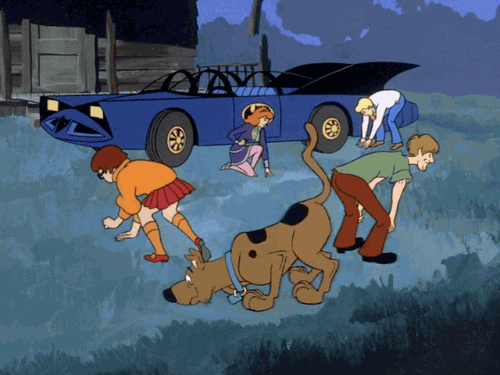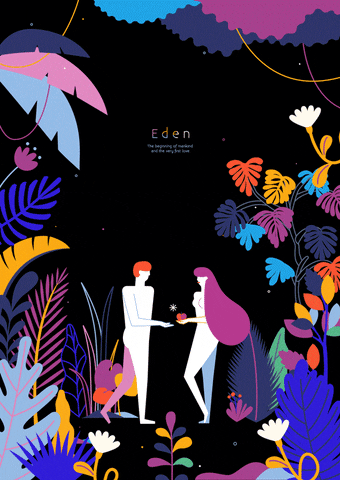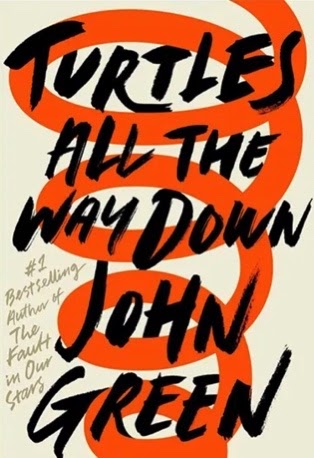
In the novel, Turtles All The Way Down by John Green, we enter the mind of Aza Holmes, a high school girl who has Obsessive-Compulsive Disorder. Aza embarks on a journey with her best friend Daisy as they try to figure out where Davis Pickett’s dad went as he disappeared to avoid the cops. Readers may be unaware of the premise. In Sierra’s blog, she identifies it as what would happen if you have to acknowledge your identity, which act of acknowledgment may disrupt the world and everyone in it? And that is true for the character of Aza or her mental illness, OCD. She has trouble coping with the idea of germs being inside her body, and it drives her to spiral out of control with her thoughts. In the first chapter, she was not able to pay attention to the conversation between Daisy and Mychall at lunch,
“ ‘Aren’t you listening?’ Daisy asked. I am listening, I thought, to the cacophony of my digestive tract. Of course, I’d long known that I was playing a host to a massive collection of parasitic organisms, but I didn’t much like being reminded of it.”
(Green 3)
That leads to the controlling and counter ideas that Sierra recognizes in her blog. The counter idea would be ‘being passive and defining oneself by their mental illness leads to feeling indistinguishable’ as the controlling idea is, ‘one must be independent and emotionally open to feel like a true individual’.

Why does that matter, and why should readers think about those ideas? Well, it explains the role of the genre. The flow of the story seemed to be a mystery for how Aza and Daisy rode across the river and into Pickett’s estate to find the night vision camera that takes pictures when it senses movement (Green 27). Plus, Green blinded the reader with mystery tropes with Davis’s dad having notes that had hidden meaning, stashes of money that were kept in cereal boxes, etc. Sounds like a mystery, right? Naturally, I thought so too, yet I realized it was also what is called teen fiction and more traditionally understood as a bildungsroman: a narrative of development or maturation, transitioning from adolescence into adulthood. It made sense for it to be those as Aza was trying to identify herself as a person and as an illness. Perhaps, Green was trying to block the reader from seeing the bigger picture, the message of the story, by having mystery tropes to leave within the text. This quote from Aza foreshadows a definite spiral that will happen to her,
“The thing about a spiral is, if you follow it inward, it never actually ends. It just keeps tightening, infinitely.”
(Green 7)
Yet, the mystery tropes were decoys to distract the readers from the real mystery, and that was Aza, who pondered about C.diff and the band-aid she used to cover up her finger that she picks and cuts at the callus. There was a clue itself of a deeper matter to look at as it was not random for a character to be fighting within herself about germs. Also, having Aza worry if the cut is infected or not, how much blood was there, and if there are moisture and the puss, “Ever since I was little, I’ve pressed my right thumbnail into the finger pad in my middle finger, and so now there’s this weird callus over my fingerprint. After so many years of doing this, I can open up a crack in the skin easily, so I covered it up with a Band-Aid to try to prevent infection. But sometimes I get worried that there already is an infection, and so I need to drain it, and the only way to do that is to reopen the wound and press out any blood that will come.” (Green 5-6)
What helped me to figure out the genre was first understanding how the hermeneutic code operates in the book. In her chapter “Re-Writing the Classic Text,” Kaja Silverman defines the hermeneutic code as “the desire for closure and ‘truth.’ However, this code provides not only the agency whereby a mystery is first suggested and later resolved but several mechanisms for delaying our access to the desired information,” (Silverman 257).

The meaning was that there is something brought in the text first and later to be resolved in the end. At first, the hermeneutic code sounded like a perfect partner for my mystery genre since, in the first chapter, the audience learned of Russell Pickett’s disappearance since Daisy and Mychal were discussing this at lunch (Green 3). But it was a bildungsroman as Aza has philosophical views of herself, such as she thinks to be a character in a book as she even addresses the audience that, “Of course, you pretend to be the author. You have to. You think, I now choose to go to lunch, when that monotones beep rings from on high at 12:37. But really, the bell decides. You think you’re the painter, but you’re the canvas.” (Green 1-2). A sense of unknowing your place in the world, especially as you grow up falls in the cracks of teen fiction, but with heavy thoughts and philosophical ideas, the story was bildungsroman.
Within the hermeneutic code is an element she calls “jamming”, which she describes as “an acknowledgment of the apparent failure of the hermeneutic activity, usually because of the exhaustion of all available resources (the death of a key witness, the destruction of vital evidence, someone’s stubborn refusal to talk, etc.), and is intended to induce in the reader a frenzy of epistemophilia,” (Silverman 261).

The word ‘epistemophilia’ means the love of knowledge as defined in the Merriam-Webster (1). With that in mind, jamming is about knowledge and the danger it can be as people try to find it or those who have it. For example, Silverman talks about Dr. Jekyll and Mr. Hyde, who show that knowledge is evil as Jekyll destroys himself and his relationships to know the basis of evil (Silverman 261). That leans Aza’s OCD compulsions intensified, as did her need to know her place in the world. In a climactic scene, Aza was conflicted on consuming hand sanitizer to make herself clean, she said,
“…you will get up and wheel your IV cart let me up out of this wheel your IV cart to the front of the room please and you will pump the hand sanitizer foam into your hands, clean them carefully, and then you will pump more foam into your hands and you will put that foam in your mouth, swish it around your filthy teeth and gums. But that stuff has alcohol in it that my damaged liver will have to process DO YOU WANT TO DIE OF C. DIFF no but this not rational THEN GET UP AND WHEEL YOUR IV CART TO THE CONTAINER OF HAND SANITIZER MOUNTED ON THE GODDAMNED WALL YOU IDIOT. Please let me go. I’ll do anything. I’ll stand down. You can have this body. I don’t want it anymore. You will stand up. I will not. I am my way, not my will. You will stand up. Please. You will go to the hand sanitizer. Coito, ergo nonsum. Sweating you already have it nothing hurts like this you’ve already got it stop please God stop you’ll never be free of this you’ll never be free of this you’ll never get your self back you’ll never get your self back do you want to die of this do you want to die of this because you will because you will you will you will you will you will.
…I heard my mom stirring. I didn’t care. Pressed the dispenser, rubbed the foam all through my hands. Pressed it again, and shoved a scoop of it into my mouth…”
(Green 227-229)
How does this fit in the controlling and counter ideas? Well, leaving your mental illness to destroy yourself will cause you great harm, as Aza consumed hand sanitizer because she wanted to keep herself ‘clean and pure’. She called her a demon because she thought there was one inside of her, which depicts her OCD to be, but she realized it was her the entire time.
“I knew how disgusting I was. I knew. I knew now for sure. I wasn’t possessed by a demon. I was the demon.”
(Green 229)
Being able to confront it and open up to her therapist, Dr. Singh, and Daisy, she felt at peace and accepted she was real, and there will be times where she had to take care of herself. She opened up to Daisy about not hating herself, she said,
“ ‘There’s no self to hate. It’s like when I look into myself, there’s no actual me- just a bunch of thoughts and behaviors and circumstances. And a lot of them just don’t feel like they’re mine. They’re not things I want to think or do or whatever. And when I look for the, like, Real Me, I never find it. It’s like those nesting dolls, you know? The ones that are hollow, and then when you open them up, there’s a smaller dolls inside, and you keep opening hollow dolls until eventually you get to the smallest one, and it’s solid all the way through. But with me, I don’t think there is one that’s solid. They just keep getting smaller.’ ”
(Green 244)
By opening up and understanding, everything will not be okay. Which fits the saying of ‘turtles all the way down’ as it means an infinite amount of worlds on top of another, like how our thoughts could feel. So to talk to yourself, you will thrive mentally, physically, and with your relationships too, and maybe the book should be called Turtles All The Way Up!


Green does an interesting thing with the semic code in this novel. Our group has been focused on Aza’s OCD, how it affects her, the people around her, her discovery of the ‘self’, etc. All of our questions and concerns for Aza are stemming from Green applying the semic code to her OCD. Aza calls her disorder a demon. A demon that possesses her and controls her actions. We even get insight into an interaction between Aza and her ‘demon’ as you’ve quoted from in your blog. What’s interesting is that that passage is a turning point for the semic code and its operations. The chapter ends with Aza saying, “I wasn’t possessed by a demon. I was the demon,” (Green 146). Now, in an aggressive and unpleasant way, Aza has adapted the semic code into her growing definition of the ‘self’. She isn’t possessed or controlled by the semic code anymore, she’s taken away the ‘proper noun’-ness of her OCD. She’s taken control.
LikeLike
Green blinded the reader with many mystery tropes and I feel like I was one of them. I was so blinded I focused so much on Aza and her mental health that I started to miss out on the scenario. I feel like you and I both struggle with seeing close reading, I typically read something and try to assume the next and I think Green’s book tests me with that. As we see Aza suffer with such bad OCD it takes over her life and we realize she doesn’t have a demon inside of her she was actually the demon. “I knew how disgusting I was. I knew. I knew now for sure. I wasn’t possessed by a demon. I was the demon.” (Green 229) Like I said in my blog her OCD seems awful but is it because we are only focused on her mind and her mental health? We have no one else to focus on in the beginning of the story so are we focusing on her mental health being worse than it actually might seem.
LikeLike
Hello Paige, you do a great job at highlighting the actual struggles within Aza and how it influences her as a character over the course of the story, we still haven’t discovered the all out genre of the book, or it at least hasn’t been named yet. Everything that you describe at the beginning, it describes the textbook coming of age story. Think about it, Aza is a young teenager with her own individual struggles and also has a mystery to solve. This mystery that she has to solve involves saving Mr. Pickett, much like a hero in a coming of age story. Her own struggles as an individual, the way she sees herself as a canvas rather than a painter, this all shows how she feels controlled by her mental illness. She feels that as an individual she is defined by her OCD. But as you and Sierra pointed out, she discovers that by the end of the book that she is more than just her own mental illness, she is her own individual. In a way, she grows up by the end, much like the typical protagonist in a coming of age story. You also bring great advice in how to deal with an inner struggle.
LikeLike